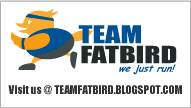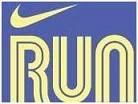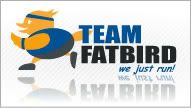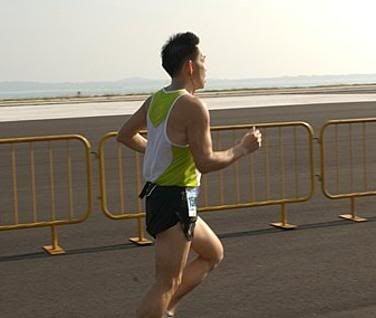Party At My Pace :)
Just received my Oct08 RunnersWorld Magazine, and saw an article on Marathon Pacers....hmm, very timely indeed...it shows the Pacer culture and activities in internationally recognized races, something the local running community can learn from....here it is->
RunnersWorld Oct 08 Feature PARTY AT MY PACE
PARTY AT MY PACE
Marathons are never easy, but pace groups make them less hard and more fun. Want proof? Follow along.
By John Hanc
Photograph by Ryan Donnell
PUBLISHED 09/10/2008, RunnersWorld Magazine
The tall, thin man with the salt-and-pepper beard hesitated before he stepped through a crush of runners and elbowed his way to a table at the Philadelphia Marathon Expo. "What," he shouted over the din, "what is this?" Seated behind the table, I launched into a prepared 60-second speech. "This is the Clif Bar Pace Team," I said. "You can take one of these and use it to pace yourself." I gestured to the thin paper wrist bracelets, each printed with mile splits adding up to a 26.2 goal time; the bracelets were organized by predicted finishes from three hours, 10 minutes to five hours, 30 minutes.
"Or you can run with one of our pace-group leaders."
"How much does it cost?"
"Nothing," I said.
"You mean I can run with my own pacer...for free?"
"Well, there'll be other runners with you. But you don't have to worry about your mile splits. Just stay with us, and we'll get you across the finish line in the time you want."
He raised his eyebrows.
"No, really," I said, abandoning the script. "These people are good. They'll get you the time, or no more than two minutes faster."
He snatched up a four-hour bracelet and smiled. "I haven't run a marathon in 20 years," he said. "I wish you guys had been around then."
Indeed, 20 years ago, the only runners with pacesetters were elites who had paid "rabbits" to help them hit splits on their way to fast, incentive-pay-laden times. Today, however, pace groups have become as integral to the modern marathon experience as timing chips, gel stations, and postrace space blankets. If you've run a marathon--or even a large half-marathon--in the last five years, chances are you've seen them: troops of runners clustered around a leader carrying balloons or a banner emblazoned with a goal finish time. When marathons offer pace groups, an estimated 30 percent of the field chooses to run with one (the 4:00 pace group attracts the largest crowds). "Our runners expect it," says Virginia Brophy Achman, executive director for the Medtronic Twin Cities Marathon.
Sometimes the pace groups are led by volunteers from local running clubs; sometimes they're outfitted and organized by major sponsors. Nike, for example, will sponsor the groups at the Bank of America Chicago Marathon on October 12, where approximately 100 pacers will lead 20 groups, with projected finish times from three hours to 5:45. (Chicago employs multiple leaders per team, in case of injury or illness.) Part cheerleader, part psychiatrist, a pacer spends many hours during the race encouraging, cajoling, and reassuring scores and sometimes hundreds of relative strangers to their dream finish line.
The pace group booth is one of the most popular at prerace expos, and not only because people want to sign up or get a bracelet with the splits. In Philadelphia last November, a distraught woman with frizzy hair and frazzled, bloodshot eyes poured her running heart out to the Clif Bar Pace Team's founder and cocaptain Darris Blackford. "I did my last long run three weeks ago. It was 20 miles, but now I'm thinking I should have gone farther. I'm not sure what pace to go at because the program I was following said I should run my long runs two minutes below race pace, but now I'm not sure what my race pace is because I didn't get a chance to do a tune-up race."
The Complete Article CONTINUES HERE















0 Comments:
Post a Comment
<< Home